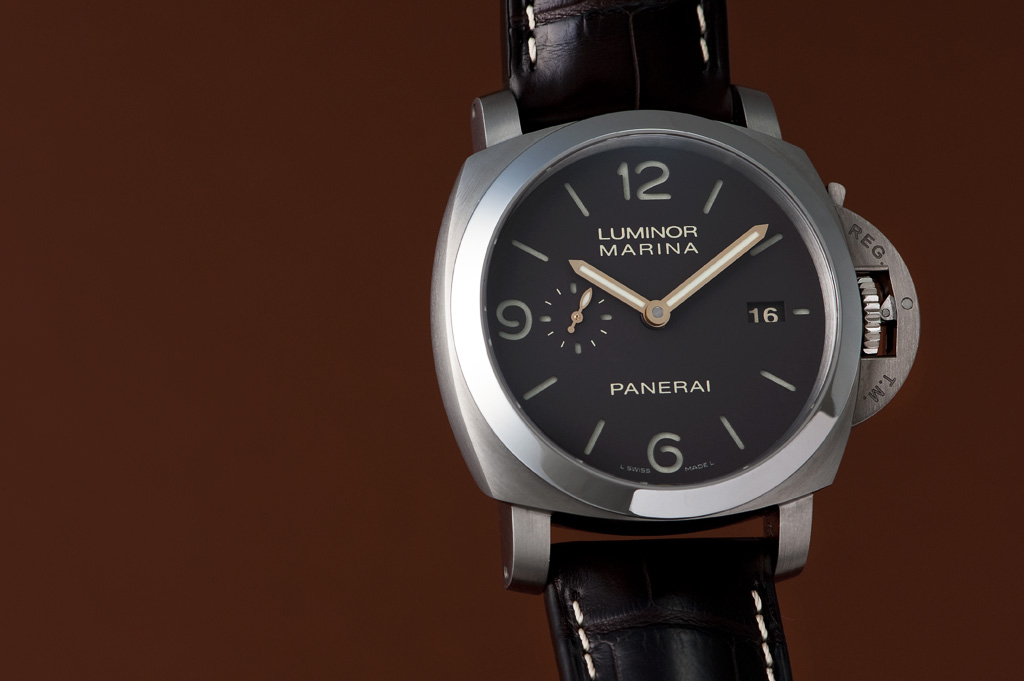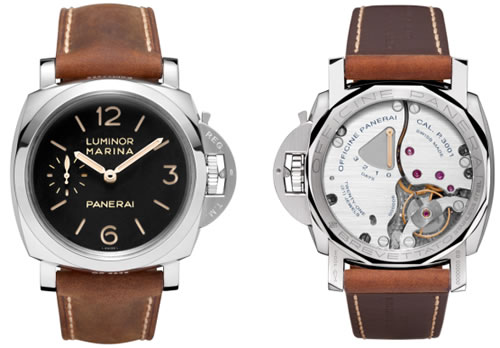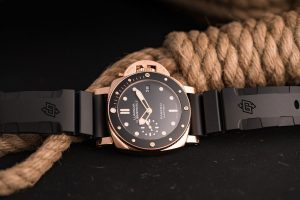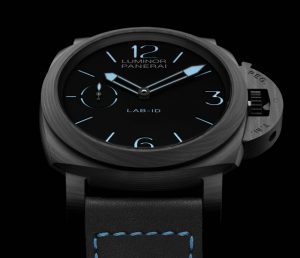
The Luminor Marina, bestseller of the Officine Panerai collections, is presented for the first time in the completely new size of 42 mm in the latest Luminor Marina 1950 3 Days Automatic.
The new size of the Luminor 1950 case has not changed the classic proportions of this model faithfully inspired by the watches created by Panerai in the 1940s onward for the commandos of the Italian Navy. Like its period predecessors, the new Luminor Marina has the bridge with locking lever, which helps to ensure a high degree of water-resistance and also protects the winding crown from accidental shocks. The crown itself operates a convenient setting mechanism by which the hour hand is rotated in one-hour steps in either direction, also adjusting the date correspondingly, without interrupting the running of the watch.
The dial, simple and quintessential in its iconic design, has the sandwich construction devised by Panerai in the 1930s to ensure maximum clarity and legibility both underwater and in the lowest lighting conditions: two superimposed discs contain a layer of Super-LumiNova® which shines through cut-outs in the upper disc corresponding to the hour markers and numerals, providing exceptional visibility.
While the design of the watch is closely linked to the history of the brand and inspired by it, the choice of materials and the manufacture P.9000 calibre demonstrate Panerai’s continuous commitment to research and development into the best technical solutions. The steel of the new Luminor Marina is AISI 316L stainless steel, an alloy with a low carbon content notable for its high resistance to corrosion.
The movement of the new Luminor Marina 1950 3 Days Automatic is the automatic P.9000 calibre, completely designed and executed by the Panerai manufacture in Neuchâtel. It has a power reserve of 3 days and it is driven by two spring barrels wound by an oscillating weight which operates in both directions. The calibre is 13¾ lignes and 7.9 mm thick, with 28 jewels and a balance wheel which oscillates at a frequency of 28,800 vibrations per hour.

Innovation, a fine tradition in technical mastery and an ongoing commitment to the development of new models and movements which are increasingly functional and reliable: the 2009 Salon International de la Haute Horlogerie in Geneva marks an important turning point for Officine Panerai as it presents a new family of handmade movements designed and made entirely in-house. It’s the family of movements P.9000, whose three new calibres join the existing four.
With the development of the P.9000, P.9001 and P.9002, Officine Panerai – originally a supplier of highly specialised watches to the Royal Italian Navy – made its name as one of the few international high-end watch makers which design the majority of their watch movement components in-house.
This is an undertaking which Officine Panerai has completed in an incredibly short time. Few other watchmakers have succeeded in developing and making no fewer than eight of its own calibres – P.2002, P.2003, P.2004, P.2005, P.2006, P.9000, P.9001 and P.9002 – fully operational and available in just seven years, with the design for the first calibre dating back to 2002.
The new movements: general specifications
The new family of calibres P.9000 by Officine Panerai is used in a series of Luminor 1950 models belonging to the Manifattura Collection, and consists of three calibres – P.9000, P.9001 and P.9002 – equipped with a range of different functions including an automatic movement with a 3-day power reserve and a particular technical design which, like the watches themselves, make these movements immediately distinctive.
The new calibres all have a diameter of 13 ¾ lignes , two barrels which guarantee 72 hours of power reserve; a single piece rotor which winds by moving in both directions thanks to an ingenious ratchet device; a balance wheel with adjustment screws, oscillating at a frequency of 4 Hz; a date display and stop seconds device which allows for accurate synchronisation of the hand with an external time signal.







